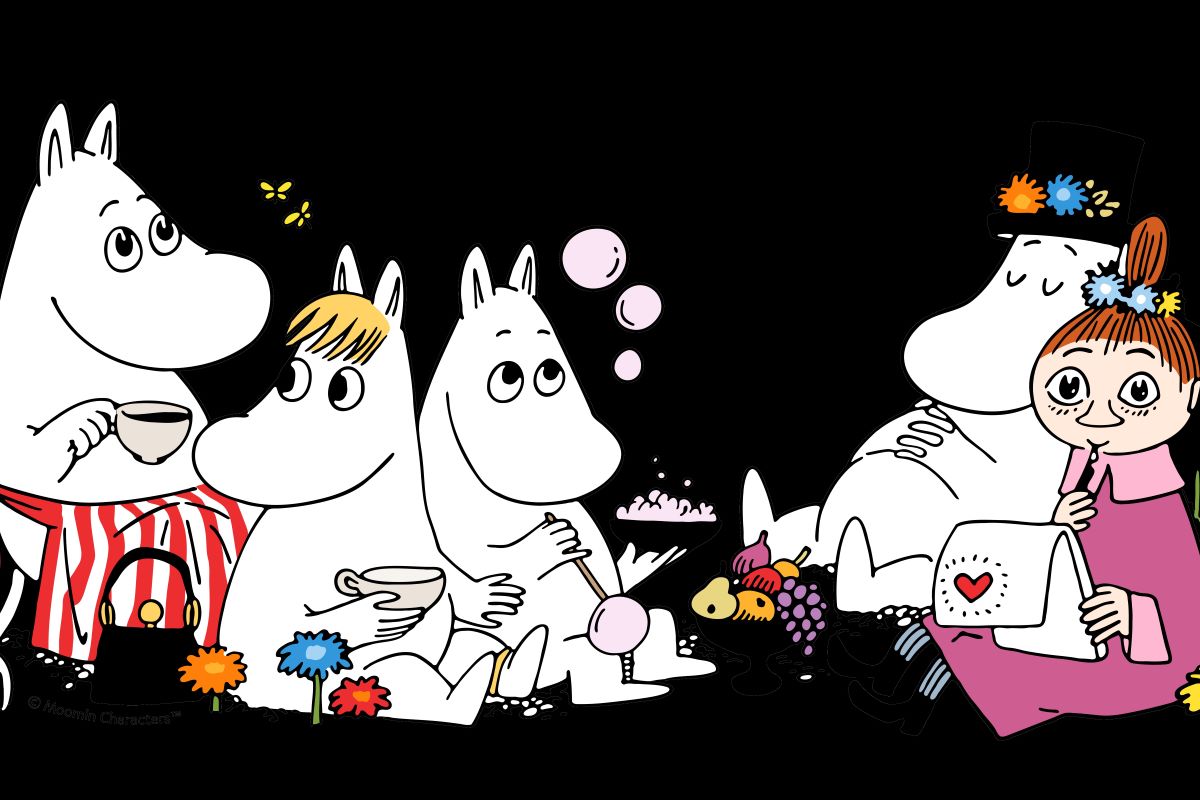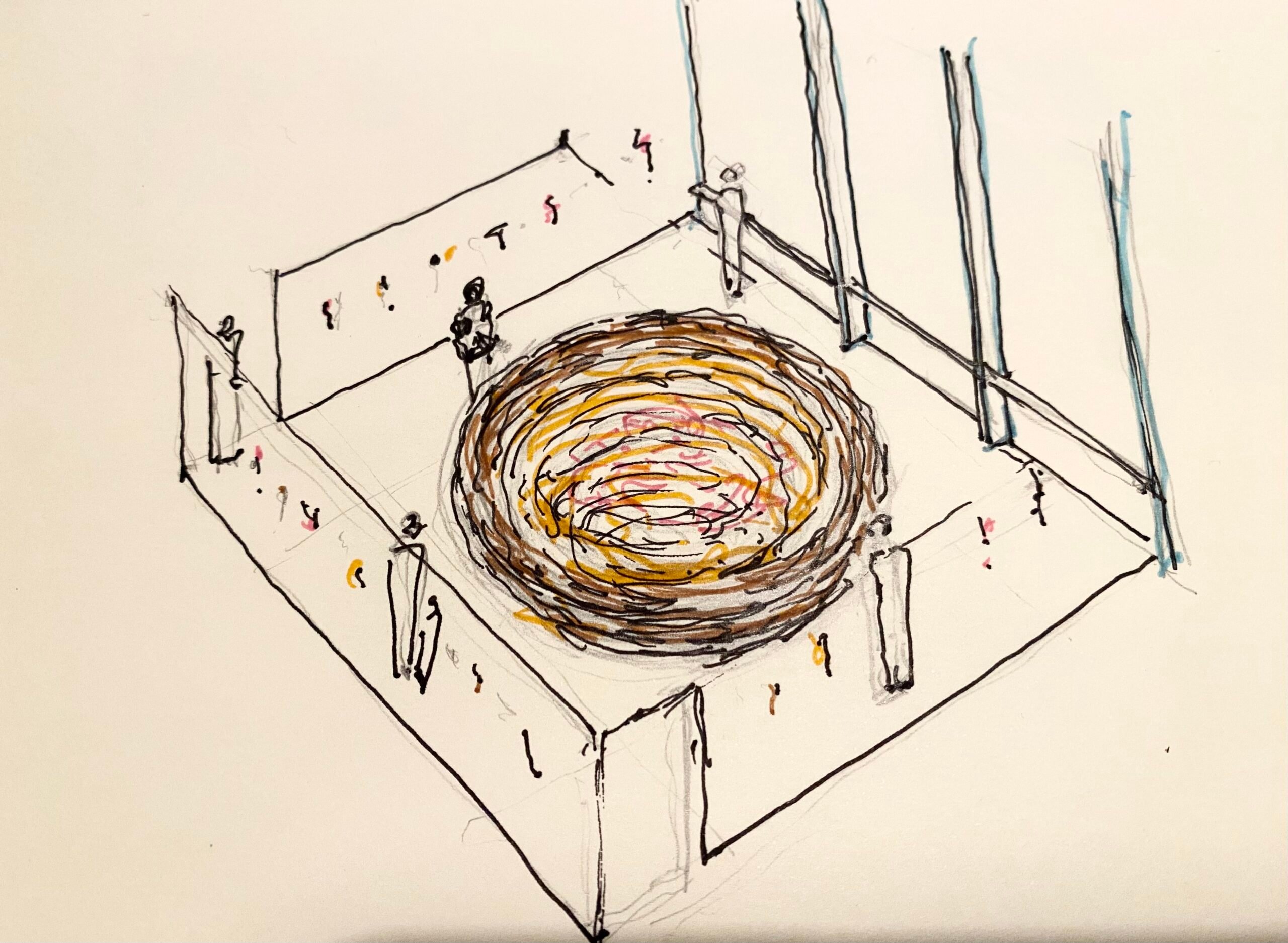
The Moomins and the Great Flood, by Tove Jansson, is a fairytale reflecting the experience of displacement
Photo: @ Moomin Characters (TM)
Reflecting the experience of displacement
Almir Koldzic is director of Counterpoints Arts, an organisation focused on migration and social change. Here he shares the special contribution refugees and migrants can make in shaping a more equal society.
In his essay Reflection on Exile, Edward Said argued that displaced people possess “counterpointed” perspectives – combining different languages, geographies and cultures, which can lead to fresh ways of seeing, questioning and imagining.
Over the past 12 years, our work at Counterpoints has been a practical exploration of this idea. During this time, we’ve had the privilege of working with hundreds of artists from refugee and migrant backgrounds, whose unique perspectives have not only posed new questions but also embodied the values of plurality, openness, empathy, democracy and shared learning.
Through collaboration with these artists – many of whom come from regions affected by war, populist and extreme right-wing politics – we have consistently witnessed how they indeed cast new lights on our times. We have also seen the special contribution they can make in helping us imagine and shape a more plural and equal future.
Emergence of a new kind of society
It may seem delusional to write about a more equal future right now, when our very democratic foundations, values, norms and international laws – built through collective and painstaking efforts since WWII – are now regularly undermined and attacked, often by the very people who are supposed to uphold them.
This climate has created a void from which a new kind of society is emerging. What that will look like remains to be seen. It is being forged and contested as we speak, through the push and pull of increasingly polarised voices, where our cultural narratives and shared values are seriously challenged by authoritarian propaganda, and where refugees, migrants and other racialised minorities are increasingly used as ready-made scapegoats for all sorts of societal problems and inequalities.
History shows us that these trends can lead to new forms of oppression and autocracy, with consequences that will affect all of us, not only the marginalised groups. This means people involved in arts and culture – organisations and individuals – no longer have the luxury of looking away or avoiding politicised topics.
With so much at stake, we all have a responsibility to advocate for the values and narratives we hold dear. And in such a highly-charged context, it’s wise and necessary to seek inspiration from artists and communities who have experienced adversity and struggle, both in the past and present.
Public art commissions
One upcoming Counterpoints project that responds to this context in a rather surprising way will feature four public art commissions by four artists from refugee and migrant backgrounds, each creating work in different locations across England.
The project is inspired by Tove Jansson, the acclaimed Finnish artist, illustrator and writer, whose work illuminates our current moment in especially profound and enchanting ways. Confronted by the horrors of the WWII, she wrote The Moomins and the Great Flood, a fairytale reflecting the experience of displacement.
This was the first in a series of Moomin stories that would gradually create an entire universe of lush landscapes, looming dangers and beautiful values, inhabited by the nature-and-peace-loving creatures named Moomins.
In the story, after surviving the flood, the Moomins embark on a journey to safety and eventually settle in Moominvalley, where they build their new life in a tall blue house – a place of joy, safety and openness to all, regardless of who they are or where they come from.
Continues…

Sketch for ‘To Own Both Nothing and the Whole World’ by Roua Horanieh and Henna Asikainen to go on show at The Baltic, Gateshead during Refugee Week 2025
Refugee Week 2025
To celebrate this timeless tale and the 80th anniversary of the Moomins, we’ve partnered with Moomin Characters Ltd, the company preserving Jansson’s legacy, to commission a series of contemporary artworks inspired by The Moomins and the Great Flood.
These artworks are co-produced with Southbank Centre in London, The Baltic in Gateshead, Gloucester Guildhall, and Bradford 2025 UK City of Culture. They will be showcased during Refugee Week 2025 and accompanied by community programmes and events.
Each of the four artworks is a unique interpretation of the Moominhouse and the values it represents. In Bradford, Palestinian artist Basel Zaraa will present a worn-out refugee tent concealing a vision of a liberated Palestine. In London, the Woodland Tribe, in collaboration with Nabil Amini, will construct a 6-metre-tall blue Moominhouse outside the Royal Festival Hall, with the input of hundreds of young people using hammers and nails.
Meanwhile, in Gloucester, artist Dana Olărescu will build a raft with a unifying message on its sails. And in Gateshead, Henna Asikainen and Roua Horanieh will interact with the impressive architecture of The Baltic by incorporating nature in the form of a giant nest, uprooted trees and cherry blossoms.
Potential of the arts to bridge differences
While each of these works is distinct, reflecting the unique perspectives of the artists and the local contexts in which they are created, they share a common goal: to engage local communities and different audiences, including those who have questions about migration. By drawing on Moomin-inspired themes of joy, kindness, comradery, courage and commitment to standing up for one’s values, these artworks aim to surprise, move and open us up to new experiences.
Against the darkening background, this project will stand alongside hundreds of other projects showcased during Refugee Week 2025, hopefully inspiring and mobilising all of us who love the arts and believe in its potential to bridge differences and connect us across borders both real and imaginary.
When Doris Salcedo, a visionary artist known for creating work in response to war, was recently asked how she keeps from despair in moments of political crises, her answer was: “We just have to keep working – harder than ever before.”
This feels like the perfect motto for our times, something we should all translate with urgency into our work and actions.
Join the Discussion
You must be logged in to post a comment.